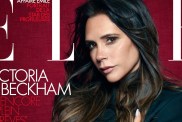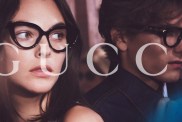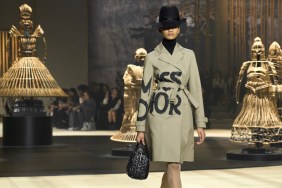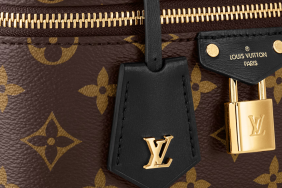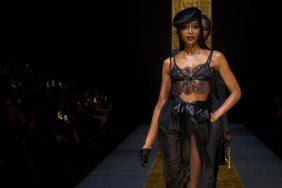Text by Jenny Soderman and Photos by Soren Jespen of www.copenhagenstreetstyle.dk
The first day of Fashion Week in Copenhagen saw the inclusion of established international brands and a new Scandinavian approach. The opening act for the week was one of Sweden’s finest brands, Ann-Sofie Back.
In a nationwide pre-interview, the director of the Danish Fashion Institute Eva Kruse told the viewers that this was a deliberate move towards a new joint Scandinavian effort.
True to her name, Back reversed the usual format and sent out all her models on the runway together at the beginning of the show instead of at the end.

Like her last collection, the show was inspired by magazines filled with photos of tragic failed celebrities stumbling out of limos flashing their crotches.

The new Back collection again draws on the designer’s simultaneous criticism of and fascination with the exploitation of celebrities such as Britney Spears.

Back’s clothing referred to plastic surgery with a minimalist jacket, on which the shoulder-stitching suggested the staples and the surgical tape often seen on celebrities post-procedure.

Back played with counterparts and contradictions by presenting masculine jackets paired with frilly feminine satin dresses and wispy asymmetrical skirts.

Back’s show was followed by luxurious and ultra-sexy eco-brand Noir.

As usual, the models strode out on a high-gloss black catwalk in the City Hall to the sound of a symphony orchestra, to emphasize the dramatic fabrics and silhouettes of the brand.
The youthful rock’n’roll-inspired diffusion line Bllack opened the show and profiled a black metallic catsuit, cocoon-shaped and beautifully draped a-line leather dresses, and a glittery tailored and sharply cut blazer. The color-palette for the Bllack-line consisted of black, different shades of grey and a little bit of white and lilac. One of the only disappointing pieces was a purple jersey dress with a bejeweled motif reminiscent of mass-market t-shirts.

The Noir-line was more feminine than previous collections — with subdued dusty rose shades and bright whites and of course, the compulsory black.

Among the most interesting was a dramatic draped goddess-dress, sophisticated mink-fur pieces, a draw-string glossy leather blouse, glossy chiffons, and knits so thin that they were almost transparent.

Many of the dresses were asymmetrical and some featured peacock-feathers as straps.

The kimono-influences were strong and Peter Ingwersen again proved that it’s possible to combine meaningful consumption and social and environmental responsibility with sex appeal and glamour.


Elise Gug showed her collection in a somewhat different setting in an Italian-inspired backyard and apartment in the city-centre where the press and viewers could walk around the models who were “frozen” in their poses doing gardening, having a tea-party and doing their nails with hair tied in buns or hanging loose.

The inspiration for Elise Gug’s show and collection was the idyllic aesthetic and life around the north-Italian lakes where time seems frozen.

Chiffon dresses, super-fine knits, satin pleated skirts and pearl details were key items of the show.

The collection was set in delicate pastels and with romantic cuts inspired by the fifties. Elise Gug benefited from the beautiful setting and the novelty of presenting fashion in terms of an art installation, but the design was very reminiscent of previous collections.
Another great venue on the first evening of the fashion-week was an old chapel decorated with luminous sticks.
The contradictory 1868 chapel and the modern urban decoration proved to be the perfect setting for the Wackerhaus collection, an understated and elegant collection for urban and sophisticated women.

The collection featured tulip-skirts with an abundance of oversized pockets, a cardigan with charming heart-shaped elbow pads and wearable pants with elastic hems and an innovative yet feminine take on batwing sleeves.

The colors were grey, pale lilac, black and an interesting coral-tangerine shade that instantly drew focus from the cuts, shapes and forms of the dresses themselves.

All in all, the collection was wearable and managed to combine fragile femininity with masculine elegance and nonchalance.

One of the most awaited and visited shows of the week was Stine Goya outside the ballroom Bröndsalen in the Frederiksberg Gardens.

The catwalk was strewn with small houses to illustrate the theme of the show — La Cité Perdue (The Forgotten City), the old city-picture that is slowly disappearing in Copenhagen like in many other cities around the world.

Goya showed exciting silhouettes and focused on prints. The aesthetics have moved from whimsical naiveté towards youthful sophistication.


Bruuns Bazaar’s diffusion line BZR is often described as the younger and edgier version of the parent brand, but the Spring/Summer Collection 2009 proved to defy expectations.

The show was set in a rainy street with the sounds of a tram in the background, but the cool setting couldn’t make up for the fact that the clothes were quite frankly boring and uninventive.

The collection was comprised of white cotton dresses with broderi anglaise, wide 70’s pants, tent-shaped dresses and denim pencil-skirts for the female collection and checkered shirts and a light grey biker-jacket in leather for the guys.

The most exciting piece was a floor length white kaftan with pink flowery-print and geek-chic guys footwear: white brogues and jazz-shoes combined with equally white socks, paired with shorts.

Some images are also courtesy of Copenhagen Fashion Week.


